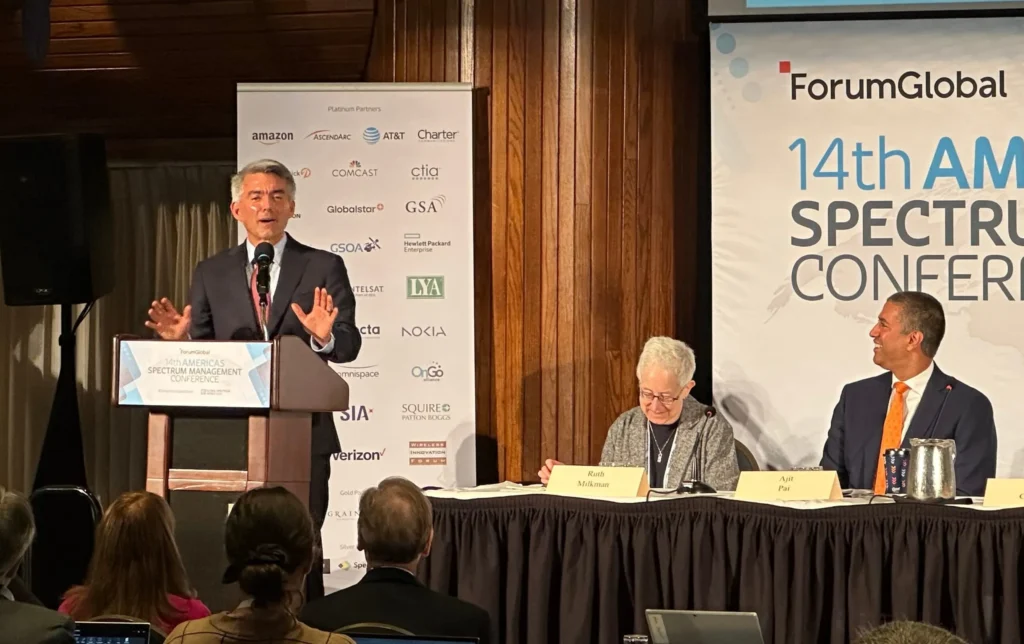Federal policymakers at NTIA are poised to release a plan to implement the National Spectrum Strategy to open certain spectrum bands for commercial use while balancing national security and other important federal operations. The task before NTIA is challenging, but certain things are clear: innovative uses of spectrum have unlocked new opportunities for consumers and are disrupting the wireless marketplace.
Cable providers are part of that new ecosystem of innovation and competition. Building on widely deployed next-generation broadband networks, cable providers are increasingly delivering ultrafast connections to homes and businesses with gigabit Wi-Fi and providing meaningful and growing competition to consumers’ mobile offerings.
In addition, proven technological advances have allowed a new ecosystem of spectrum holders to coexist with incumbent users, promoting economic growth and innovation, and doing so without imposing high costs and disruption to federal government users.
But incumbent wireless carriers are vested in ignoring how these changes bring new opportunities to consumers and future spectrum policy. Instead, they (and their trade association CTIA) want to cling to old methods of clearing spectrum and forcing relocation of federal incumbents to make room for exclusive, high-power licensed operations. This tired approach is increasingly unnecessary, impractical, and costly.
You can read more about our position here, but as we move forward, spectrum policy must recognize the following:
- American wireless use has changed. Americans rely far more on unlicensed wireless technologies like Wi-Fi and technologies that enable targeted use cases than high-power exclusive coverage networks.
- In fact, over half of all U.S. and global internet traffic—wired or wireless—is delivered over Wi-Fi. Even for mobile users, the internet has become synonymous with Wi-Fi, as today, billions of devices connect to Wi-Fi and Wi-Fi carries more than 85% of cable operators’ mobile data traffic on average.
- The appetite for targeted use cases is evidenced by the success and diversity of CBRS, utilized by education and health care providers, wireless internet service providers, utilities, Tribes, equipment providers, and traditional broadband internet service providers, in addition to the cable industry.
- NTIA faces a more complicated incumbent landscape. With the depletion of greenfield spectrum and the rise of congested operational environments, opening new bands to exclusive commercial operations is increasingly challenging.
- Well-established coexistence technologies, like Wi-Fi and shared-licensed models, make it possible for the U.S. to commercialize critical bandwidth without displacing federal incumbent operations—a “win‑win‑win” for national security, innovation and competition.
- Well-established coexistence technologies, like Wi-Fi and shared-licensed models, make it possible for the U.S. to commercialize critical bandwidth without displacing federal incumbent operations—a “win‑win‑win” for national security, innovation and competition.
- China’s strategy is to promote exclusive-licensed networks. Imposing new allocations of high-power, exclusive-use licensing puts security interests at risk and supports China’s wireless strategy, not America’s. Carriers are advocating for international harmonization in the 7 GHz band to create a bigger market for 5G and 6G that most strongly benefits Chinese‑sponsored companies like Huawei and ZTE. Further, the proposal to use the lower 3 GHz band for commercial purposes could put U.S. national security interests at risk. However, there are alternative options for commercial use that would cause less disruption.
- To counter these goals, the U.S. must support American‑led technologies and access frameworks, like Wi‑Fi and shared 5G in CBRS, where it continues to innovate and hold a competitive advantage at home and abroad.
- To counter these goals, the U.S. must support American‑led technologies and access frameworks, like Wi‑Fi and shared 5G in CBRS, where it continues to innovate and hold a competitive advantage at home and abroad.
- Promoting shared spectrum use will further ongoing competition in the wireless and broadband marketplace.
- Shared-licensed spectrum allows more players to enter the marketplace and gives consumers more options and better prices for connectivity, better quality connections, and significantly faster speeds. Americans are clearly concerned about the costs of their mobile phone plans, and promoting spectrum coexistence will further ongoing competition in the wireless and broadband marketplace.
As America crafts spectrum policies to boost innovation, competition and global leadership, without compromising national security, it’s time that we move past outdated strategies that support the status quo and embrace policies that will allow the U.S. to continue to lead the world in wireless technology.








